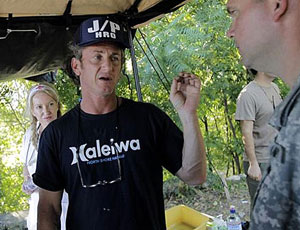More than four months after a devastating earthquake hit Haiti, Congress is stepping up efforts to provide funds for disaster relief and start rebuilding the country. Lawmakers also are insisting on specific goals and timetables for achieving those reconstruction targets.

Haiti funding hasn’t been enacted yet; congressional action on that front has been at the committee level so far.
The Senate Foreign Relations Committee on May 25 cleared a bill authorizing $2 billion for Haiti reconstruction, including $1.5 billion in fiscal 2010 and $500 million in 2011. The funds would be subject to annual appropriations, however.
Committee Chairman John Kerry (D-Mass.) called the measure “an important marker” in the congressional commitment to the Jan. 12 quake that killed 230,000 people and caused damages estimated at $11.5 billion. But the bill was pared back from Kerry’s original $3.5-billion, five-year proposal.
Kerry supported the reduction, which was proposed by the committee’s top Republican, Richard Lugar (Ind.). “We don’t really know what’s going to develop over the next five years,” Kerry said.
Lugar said the lower funding also “recognizes likewise the fiscal plight of our government, the U.S. government.”
The legislation would direct the U.S. Agency for International Development to produce a rebuilding strategy for Haiti in consultation with the Haitian government and other organizations. The plan would include specific targets.
The Senate Appropriations Committee also moved on aid for Haiti. The panel on May 13 approved $2.8 billion for Haiti as part of a broader fiscal 2010 supplemental spending measure. The Haiti portion would go for humanitarian and economic purposes as well as for peacekeeping and reconstruction.
Of the $2.8 billion, $770 million is designated for “relief, rehabilitation and reconstruction assistance,” including $438 million for infrastructure. Of the infrastructure allocation, $144 million would go for shelter and $147 million for energy.
Appropriators also attached strings to the Haiti money, saying that before funds are obligated, the State Dept. would have to report that Haitian government officials and other organizations will help design and carry out the programs. The legislation also mandates that “progress will be measured against specific benchmarks.”
The Foreign Relations panel also got an update at a May 19 hearing on the situation in Haiti from federal and private-sector witnesses who have been involved in relief efforts in Haiti.
Sen. Robert Casey (D-Pa.), who chaired the hearing, said, “Much progress has been made during this post-disaster period in Haiti.” But, he added, “I fear … that as the number of days since the earthquake grows, the resolve and focus of the international community diminishes.”
Kenneth H. Merten, U.S. ambassador to Haiti, who is on his third tour as a foreign service officer in the country, noted Haitians refer to the quake as “bagay la,” which means “the thing.”
Several months after “bagay la,” Haiti now is in “a period of transitions—from the most critical humanitarian relief efforts to long-term development,” Merten said.
T. Christopher Milligan, USAID’s disaster-response coordinator in Haiti, told the committee, “The challenges before us are formidable. The road ahead will not be easy.”
Actor and activist Sean Penn also testified, saying Haiti lies on “the razor’s edge.” Penn, who heads the San Francisco-based J/P Haitian Relief Organization, appealed for continued U.S. help to address Haiti’s continuing—and severe—health problems, including the threatened spread of diseases as the hurricane season draws near.
As the U.S. pulls back from more than 20,000 personnel after the quake to about 500 on June 1, Penn urged the U.S. to “stay the course in Haiti.” He said Haiti is in a war, noting, “It is a war against the diseases and preventable disasters caused by nature and poverty.”
There was little discussion of physical reconstruction at the hearing. Speaking to ENR after his appearance before the panel, USAID’s Milligan said, “Right now, we’re in the process of really responding to the humanitarian assistance requirements.” In the engineering and construction area, he said, the current work in Haiti is “basic rubble removing, and we’re using a lot of manual labor to do that because it creates jobs.”
Merten said that in the post-quake period, “The U.S. military had a reasonably large engineering contingent in country. … They trained a lot of local Haitian people … to evaluate houses, buildings, etc.”
Milligan added that Haiti’s government has issued a redevelopment plan. Further, it has set up an Interim Haiti Reconstruction Commission, which “has approved a strategic way forward,” he said.
Another USAID official said the agency has held outreach meetings in New York and Miami for contractors regarding work in Haiti.
USAID now is focusing on humanitarian assistance, Milligan said. “The rebuilding part will be coming shortly thereafter,” he said.


Post a comment to this article
Report Abusive Comment